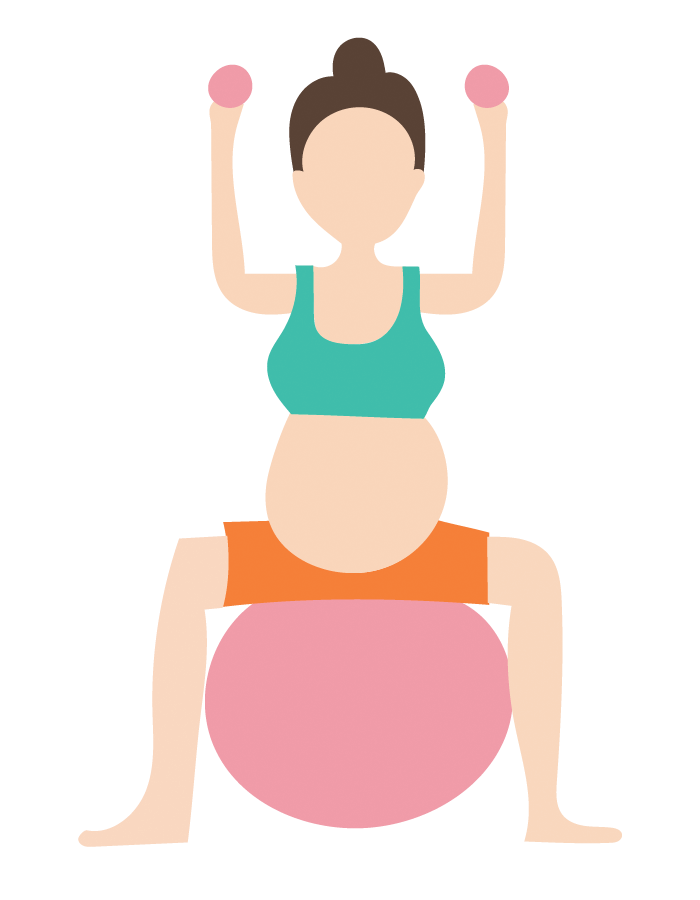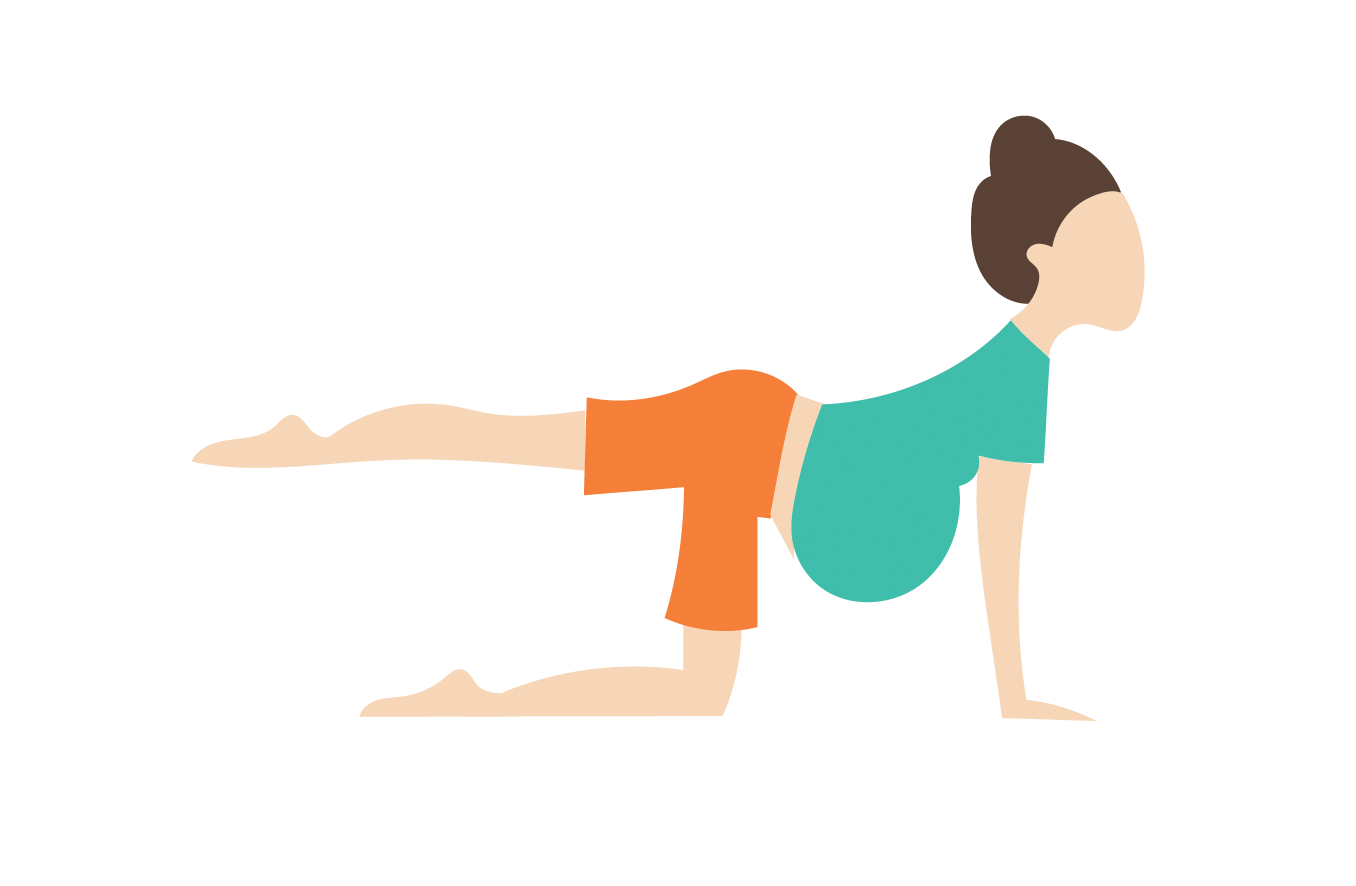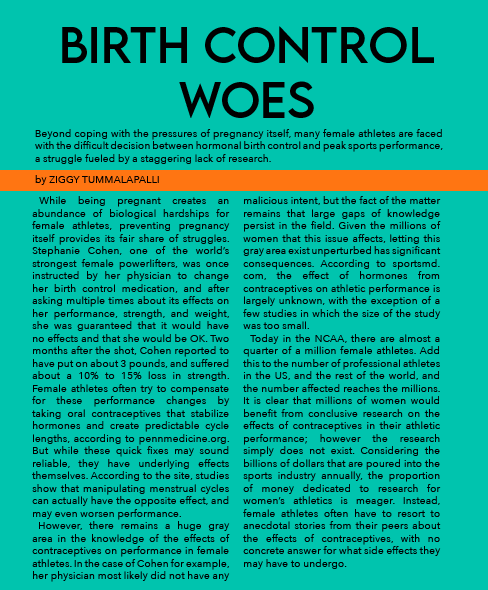Training for Two
Hormones run amok, stomach swelling in size, and, after nine months, the birth of a new life. While pregnancy is a life-changing, celebrated process for most, female athletes are rarely able to undergo the experience free from worry. Already burdened by the expectation that they’ll quickly bounce back to their previous physical form, female athletes have also faced severe discrimination from their employers and sponsors.
May 22, 2020
It’s a sunny June morning in Sacramento, California, and Alysia Montaño bears the look of a competitor so focused on the race ahead of her that she’s immune to the effects of the heat. She’s clad in black compression shorts, a bright pink tank top, and a yellow flower tucked behind one ear, but her distinguishing feature isn’t tied to her vibrant clothing at all. Instead, it’s her bulging baby bump protruding beyond her shirt. Montaño is eight months pregnant, and she isn’t resting at home. No — Montaño is about to race in the 2014 U.S. Outdoor Track and Field Championships’ 800-meter race.
Pregnancy and childbirth have long been considered “the miracle of life” and one of life’s greatest journeys. When female athletes become pregnant, their bodies change in ways that directly affect their participation in their sport. They are no longer caring only for the body of a top-tier athlete, but are also met with the demands of a growing fetus and the resulting changes in their physique. Some female athletes choose to take time off, but others elect to train through their pregnancy period. At times this choice is simply that, a personal choice, yet in other instances it stems from a fear of losing contracts or sponsorships during their break.
For those who choose to pursue their sport, there are certain risk factors associated with each stage of the pregnancy to both the mother and the fetus. According to the American Academy of Physical Medicine and Rehabilitation, normal risks of exercise are heightened, and overheating, dehydration, or low blood sugar, become increasingly dangerous, not only to the fetus but to the mother as well. Should the mother have any pre-existing injuries, they can be worsened by further loss in bone density, anemia, or joint problems.
One of the most notable pregnant competitors is Serena Williams, who played through several months of her pregnancy. She was formerly ranked as the best player in women’s professional tennis, and she won the Australian Open in 2017 while eight weeks pregnant, having only found out about the child two days beforehand. Despite the news, she continued to compete with the confidence that she could still win the tournament. Holding true to her ranking as the best in the world, she secured the championship title and proved to the world that pregnant athletes have the capability to win a major sports tournament.
In a Vogue interview regarding motherhood, many of the concerns Williams expressed were like those of any other expectant mother. Vogue reported that she worried frequently about whether or not she’d make a good mother, how she’d know which rules to follow and which rules to break.
In contrast to the fiercely confident persona she bears on the tennis court, Williams’ worries were a window into a side of herself that’s rarely visible: her self-doubt. While that doubt is an emotion that most individuals experience before the birth of a child, the sudden rush of fear and uncertainty is magnified for a female athlete.
Williams mentioned in the same interview that when she looks at her daughter she’s reminded of all of the goals and dreams she had before tennis took over her life. While the comment was made as an off-hand remark, it’s revelatory of a struggle that many women can identify with: being forced to choose between a career and a family. Women, historically fenced into the role of caretaker and stay-at-home mother, are still expected to shoulder the responsibility of childcare despite a modern world in which women’s labor force participation has skyrocketed. Williams wasn’t the first woman to feel as though she had to choose between career advancement and starting a family.
For an athlete, their body is their career, their livelihood. They can only participate in their sport if their body is in peak shape, a shape that is dramatically changed by pregnancy. While most mothers have to consider how they’ll manage their time with a new child, female athletes must also consider how their sports performance will be affected, a consideration that makes family planning all the more stressful.
The effects of pregnancy on the female body are well-documented, but the extent of changes can still be unexpected. A woman’s body drastically changes during all nine months of pregnancy. However, not all of these changes are visible. Of course, there is an expanding stomach accompanied by weight gain, but there are more changes than what meets the eye. The more well-known effects can include morning sickness, backaches and cravings. But for athletes, there can be more changes and side effects than a normal pregnancy. In a pregnant athlete, there are different risks that can happen when their bodies are changing because of their backgrounds in high-intensity workouts. High-effort training, which most female athletes are accustomed to before their pregnancy, can pose more significant risks to the more vulnerable pregnant body.
Pregnancy symptoms stretch beyond the immediately visible physical changes — there are extensive psychological effects of pregnancy. Frequent mood changes, persistent nausea, aversion to certain foods, cravings, anxiety, fatigue, sleepiness, and ambivalence are just some effects of the massive hormonal changes that occur during a pregnancy.
Not to mention the fact that making it through those often-grueling nine months of child-bearing doesn’t always mean the body is home-free.
Williams is perhaps the perfect example of this: she’s described her pregnancy as easy, but immediately following her labor, Williams’ world was turned on its head. Her baby, Olympia, was born via emergency C-section after her heart rate plummeted during contractions. The following day, Williams found herself feeling short of breath in her hospital bed, and refusing to worry her mother by asking for a nurse, she staggered out of her hospital room herself with her lungs peppered with several small blood clots.
That alone would have been enough physical trauma for Williams’ lifetime — she’s had troubles with pulmonary embolisms before — but her case only worsened. Her C-section wound burst open due to her blood-clot-induced coughing, and during surgery for that wound, doctors discovered that a hematoma had poured into her abdomen. For the first six weeks after pregnancy, Williams couldn’t even get out of bed. She remained immobilized in bed, recovering from massive internal injuries.
To return to play after an experience like that — to have the world watching, expecting the same great player they have previously seen — is a feat Williams has rightfully been commended for. But upon returning, she lost two early matches, and entered the French Open unseeded when she’d been ranked No. 1 in the world prior to her pregnancy.
Since Williams’ experience, the Women’s Tennis Association has made praiseworthy changes to their rule book meant to make the transition easier for female athletes returning to competition after starting a family, including a new rule enabling the athlete to use their special ranking at additional tournaments and for seeding purposes for the following three years.
The WNBA also implemented a maternity leave policy in January 2020, guaranteeing players fully-paid maternity leave for the first time in the league’s history.
But the WTA and the WNBA stand alone as two of few athletic associations who take into consideration the effects of pregnancy on their athletes, and who make any considerable effort to make having a child easier for athletes.
Some leagues simply lack policy to deal with the issue. Some sports sponsors, on the other hand, take the issue beyond simple ignorance, and into the territory of mistreatment. Nike, infamously, was one of those sponsors.
Although some pregnant athletes might voluntarily choose to keep playing like Williams, others feel forced to continue for fear of losing their sports contracts. Last year, Nike, one of the biggest sport companies in the world, came under fire when several pregnant athletes came forward and said their Nike sponsorship did not guarantee their salary while they were pregnant.
Before the recent changes, athlete salaries were determined based on whether or not they met a certain threshold that Nike expected their athletes to fulfill. Athletes who did not meet these expectations found their pay reduced without exception — not even for pregnant athletes.
This forced a hard choice for many pregnant athletes as the majority of their income is supplied through their sponsorship deals from apparel companies. They had to choose to compete, threatening the health of both their baby and themselves in order to maintain their job security, or to take maternity leave and risk their paycheck. Even those who chose to continue competing would be disadvantaged: the changes undergone during pregnancy would likely hinder the athletic performance of many of the athletes, stripping them of their pay because of factors beyond their control.
According to CBS News, when American track and field runner Alysia Montaño told Nike that she wanted to have a baby, Nike responded that they would pause her contract and stop payment. Montaño wrote a scathing New York Times opinion piece entitled “Nike Told Me to Dream Crazy, Until I Wanted a Baby” — the headline mocks Nike’s “Dream Crazy” ads, one of which centered on female empowerment and even referenced Williams: “Winning 23 Grand Slams, having a baby, and then coming back for more? Crazy.”
While Nike put up a pretense of support for female athletics, Montaño said that behind the scenes, Nike’s support for athletes who wanted it both ways — wanted to be both mothers and champions — was limited.
“Getting pregnant is the kiss of death for a female athlete,” Phoebe Wright, who was a runner sponsored by Nike from 2010 to 2016, said in the same Times article. “There’s no way I’d tell Nike if I were pregnant.”
Another athlete, Kara Goucher, an American track and field sprinter, felt that she was forced to return to the sport too quickly due to the financial burden put on her by her sponsor, Nike.
Three months after the birth of her son, she was scheduled to participate in a half marathon so she could retain her endorsement deal — Nike had told her that until she returned to racing, she wouldn’t be paid. However, when her son became dangerously ill, she had to make the hard decision between her son and paycheck.
After Montaño’s article and the subsequent public backlash Nike faced, they announced a new maternity policy: guaranteed pay and bonuses for 18 months due to pregnancy. The implementation of such a policy not while female athletes were suffering, but only after a congressional inquiry into Nike’s practices and a public relations nightmare, speaks to the company’s priorities.
And the issues faced by pregnant female athletes isn’t one that solely affects the professional field.
Recently, local fitness instructor and personal trainer, Aurora Christensen, has had to deal with the harsh realities of carrying a child in the fitness industry. Prior to the pandemic, Christensen was a studio manager and instructor at a local fitness studio in Palo Alto, and was responsible for everything from teaching sold-out classes to working behind the scenes.
Within seven days of notifying her boss that she was pregnant, everything began to change. Despite having consistent class attendance and being one of the top instructors at the studio, her bosses immediately sought to take some of her classes away without explanation. Out of the five classes she taught, she was only able to keep four. A new instructor was brought in as her replacement, but was not able to bring in nearly as many clients as Christensen had.
While Christensen wasn’t immune to the physiological changes of pregnancy, she didn’t believe it would impact her ability to teach, especially due to her studio’s scheduling flexibility.
“The first trimester was pretty rough in terms of my energy levels and morning sickness,” Christensen said. “I was pretty much on the couch or in bed like every single day up until about week 16.”
Nonetheless, she acknowledges that her situation could have been far worse: “I was gagging or throwing up every day, and some women throw up like four or five times a day,” Christensen said. “It definitely did impact my energy level,” Christensen said. “In my previous job … I was fortunate that I could make my own schedule, and that I was only required to be on site for about 10 hours a week plus whenever I was teaching.”
But despite the purported flexibility of her position, Christensen found that upper management quickly became unhappy with how the pregnancy had affected her schedule.
“Luckily, I was able to work from home, lying down when I needed to,” Christensen said. “There were a few times where I asked my boss, the owner of the studio, if we could postpone a phone call. And she was actually very not cool about it. She would accuse me of canceling meetings and I was like, ‘No, I just want to postpone it.’”
Christensen even found that her employer was implicitly accusing her of exaggerating her symptoms, something pregnant women often cope with. Since pregnancy affects each individual body so differently, many women who experience particularly harsh symptoms are stigmatized as acting melodramatic or responding unreasonably to the changes in their health.
“I’d email her like, ‘I had a really hard morning, I’d like to push our phone call out to about two o’clock,’ because I was kind of glued to the bed,” Christensen said. “She demanded a doctor’s note, which was over the top — morning sickness is a normal symptom of pregnancy.”
While those actions could be classified as microaggressions, subtle instances of discrimination, the bias against Christensen became much more overt later on.
“They also tried to take away the classes I was teaching, and that is illegal,” Christensen said. “I stood up for myself, and refused to [allow them] to get rid of them. I had five, and they took one away. So I was left with four, and I fought to keep those four.”
Christensen said there was little doubt in her mind that her classes had been stripped because of her pregnancy, and that while some might assume that a female-owned studio would be more understanding and accommodating of her circumstances, she was by no means sheltered from discrimination.
“I don’t think the pregnancy had a positive impact with my previous employer,” Christensen said. “After they heard that [I was] pregnant, they treated me differently. I know you wouldn’t expect that from a woman-owned business, but that’s what happened.”
Christensen’s experience mirrors that of many American woman who have come to the surprising realization that protective legislature against pregnancy discrimination often falls flat in reality. According to the U.S. Equal Employment Opportunity Commission, The Pregnancy Discrimination Act “forbids discrimination based on pregnancy when it comes to any aspect of employment, including hiring, firing, pay, job assignments, promotions, layoff, training, fringe benefits, such as leave and health insurance, and any other term or condition of employment.”
But employers tend to find loopholes when they’re unhappy that a female employee has fallen pregnant, or when an interview candidate discloses her pregnancy.
Employers who do this tend to assume that a pregnancy will affect a woman’s ability to work normal hours, think clearly and rationally, or detest the thought of investing in a worker’s training and acclimation only to have her leave for several months on maternity leave. Note, however, that in the United States, workers aren’t even obligated to pay for that maternity leave — expectant mothers or mothers recovering from labor must file for disability insurance in the state of California, for instance — but pregnant women are nonetheless seen as a liability in the workforce. Discrimination is as easy as citing a reason other than pregnancy for firing a worker or slashing their hours.
One glance at New York Times article, “Pregnancy Discrimination Is Rampant Inside America’s Biggest Companies,” and one is flooded with tens of harrowing anecdotes about pregnant women who faced discrimination in their corporate workplace. For Christensen, and other expectant mothers who work in the fitness or sport industry, that discrimination can be even harsher. While most women grapple with the stereotype that they’ll be somehow mentally impaired by their pregnancy — one of the Times stories describes a woman’s boss announcing to her trading floor that the most-read article on BBC’s website was one about how pregnancy alters the female brain when she stood as the only pregnant woman on the floor — someone who’s career relies on their body’s athletic performance is at an amplified risk of discrimination.
For Christensen, that prejudice set in in under a week, despite having medical clearance that confirmed she could perform at the same activity level as she had before.
“They tried to take away the class in under seven days, and they were like, ‘OK, we’re gonna put someone else in this time slot,’” Christensen said. “I’m not ready to give that up. My doctor has cleared me to keep my current level of activity.”
And there was, from a typical business model’s perspective, no reason to slash Christensen’s hours: she claims she was bringing in more revenue for the company than any other instructor in her kind of class, including her replacement.
“My classes were sold out,” Christensen said. “So from a numbers perspective, there’s no reason to mess with them. I was certainly bringing in more income for the company than the instructor they replaced me with… within two weeks [the company canceled] her second class because she couldn’t pull numbers.”
Christensen, like millions of Americans, was laid off due to the coronavirus and restructuring of the company. The pandemic has hit the fitness industry particularly hard, as gyms and studios have shut down throughout the nation. Nevertheless, Christensen has found ways to adapt to both her new uncertain employment situation, and to her progressing pregnancy — she’s now in her second trimester, and is still hosting online classes, with slight workarounds due to her growing baby bump.
“I’m going to say more than 90% of my colleagues in the industry are out of work right now,” Christensen said. “I am very fortunate that my private clients wanted to continue training just the same way we’re doing right now, virtually.”
Despite her adjustments, she’s kept in constant communication with her clients and her peers, who have become a support network for her over the years. FaceTiming, Instagramming (where she’s active as @thetiredtrainer), and texting them has kept her sane, as has her modified exercise routine.
“I miss teaching spin classes; I’m not doing that level of cardio anymore,” Christensen said. “But I’m trying to go on a hike or a walk every day. Although with the pregnancy, I usually need a nap afterwards, [but that] does not stop me from doing it.”
“And just recently, within the last week, I’ve had to modify my abdominal workouts,” Christensen said, pointing to her own abs as she spoke. “In the second trimester, as your belly starts expanding, your ab muscles kind of sit like this together, and the baby pushes them away… it feels so weird. It cracks me up because I was actually demonstrating a pretty advanced move for one of my clients, and I fell out of it.”
As of now, Christensen is interviewing at various gyms throughout the Bay Area, and remains optimistic about her job prospects after the shelter-in-place order is lifted. Despite that fact, she’s wary of informing her employers of her pregnancy in the preliminary stages of applying for employment due to her experience at her past job.
“I’m not worried about finding another job, [but] I am not telling [interviewers] that I’m pregnant,” Christensen said. “I don’t want any discrimination based on that.”
And pregnant or not, Christensen is the same trainer she’s ever been: one whose hard work and true commitment to her field shines through in the way she discusses her clientele. Despite being a fitness instructor, she doesn’t find meaning in making people look better physically. Her purpose is to make people feel better, a priority that’s come into sharp focus as her body undergoes an ever-changing metamorphosis.
“I like my work ethic,” Christensen said. “I never canceled classes. If I’m feeling under the weather, it’s always like, I can do anything for an hour if I need to. I’m not gonna be disruptive to [my clients’] wellness schedule.”
“I want to be real,” she said. “People have real struggles when they try to start an exercise program. And it’s very important as trainers that we don’t dismiss that. As a trainer, my job is to meet you where you are, so I can best help you. Which means I have to acknowledge the obstacles that you’re experiencing. It’s admitting that we have those obstacles … I was worn out during my first trimester, and most women, even if you’re not pregnant, you’re probably busy and tired. So as a fitness provider, I need to be aware of that and I need to be able to help you through that … it’s supposed to be real.”














